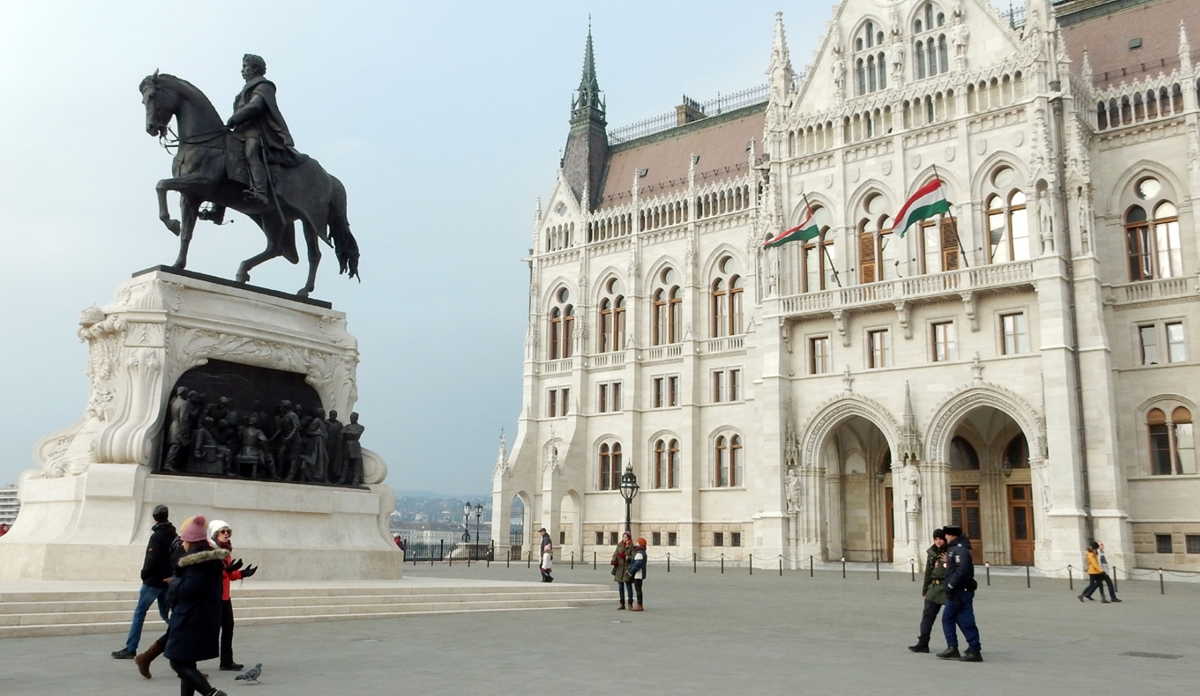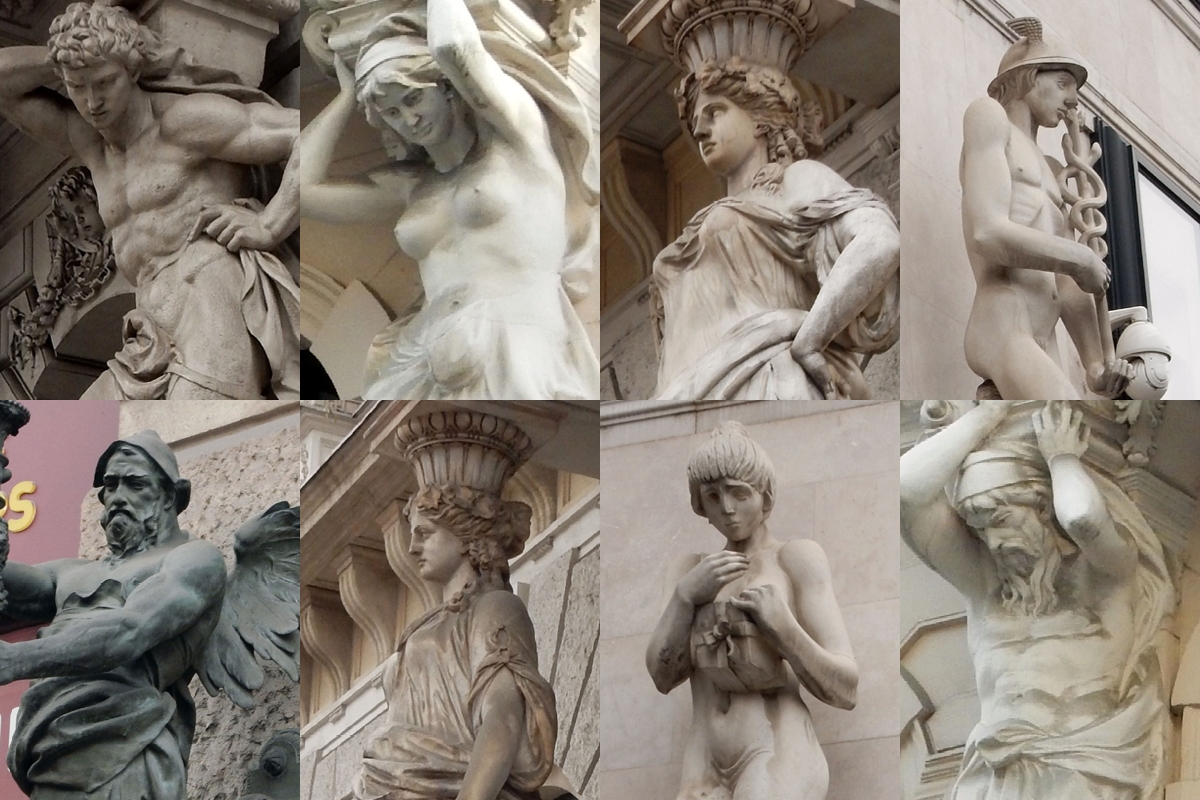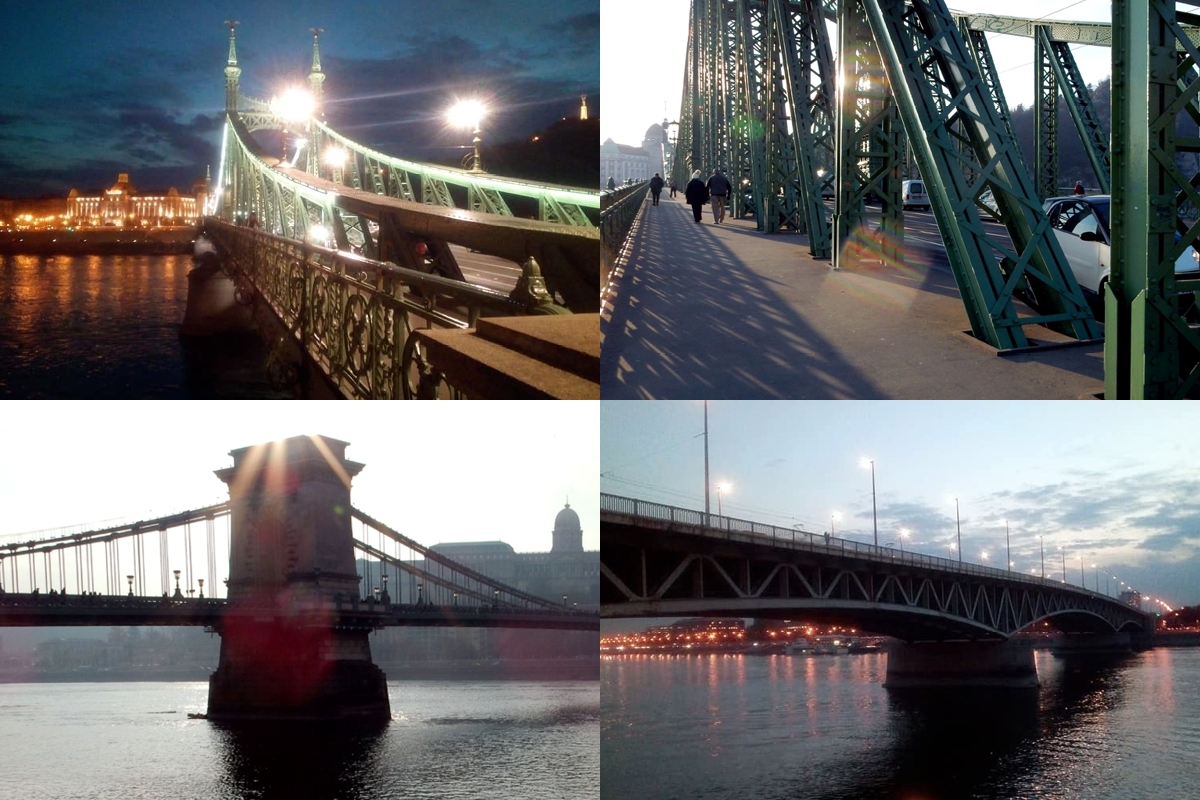Traveling & Training in Liege, Belgium
Reasons to go: Finest waffles, chocolate, and craft beer of all the world! Modern city convenience, old European city charm, museums, beautiful churches/castles, unique cultural festivals, open air markets, holiday markets, good public transportation, reasonably safe for solo female travelers (there’s a few sketchier areas to avoid, especially after dark), many English speakers.
This Trip
I was only in town for a handful days passing through from Budapest to America on this trip, so spent the majority of the time hanging out with my very wonderful aunts and uncles, tying up a few loose ends, and of course – training! Having lived in Belgium for 2.5 years previously though, I’m quite familiar with the city, so wanted to take a moment to share with you what Liege and beautiful Belgium has to offer.
Belgium
Belgium is culturally split roughly in half between the Dutch-speaking Flanders region to the North, and French-speaking Wallonian region the the South. There’s a very tiny German chunk to the far East as well, giving the country 3 main national languages. One thing to keep in mind when traveling between the three regions is that the city names change based on the language of the region. Take the French name Liege, for example. This city is also known as Luik (Dutch) and Lüttich (German).
Some of you might already be familiar with Belgium from the (now retired) massive BJJ Globetrotters Summer Camp in the small university town of Leuven. When people visit Belgium, they typically see Brussels, Bruges, Ghent, and Antwerp – all of which are quite beautiful and rich in culture, art and history. Liege (a medium-small city with the river Meuse running through the center) isn’t generally thought of as much of a tourist city but despite that, I think, still has a lot to offer!
Liege
Belgium (Liege especially) has a very special place in my heart. It’s the city where I was born and was my first destination upon leaving the US. Most of the days in the 2.5 years I stayed there were like living in a fairy tale, a feeling which never entirely wore off despite becoming quite familiar the city. It’s a medium sized city with a very elegant old European city vibe mixed with the modern. Walking down the pedestrian cobblestone streets near city center though, it’s easy to look at the buildings and imagine what the city was like a couple hundred years ago. My days in Liege were filled with fun times, great food, beautiful strolls, and a million happy memories. I arrived in Liege a stranger with a handful of distant memories from past childhood trips, and left there with a second home city.
Form the beginning, I felt a much stronger sense of community and connection in Liege than I previously had in any other American city. This was, I think, due to a big combinations of things. Part of it my attitude. Outlook towards a place does so much to change your experience and perception of it, after all. I’d dreamed about living in Liege for a very long time, and very much wanted to be there. Another part was my history, knowing this was the city where I was born and the land of my ancestor. Another part was my family. I’d grown up in America with parents and brother, but without any other extended family. Suddenly living in a place with so very kind and welcoming aunts, uncles and cousins nearby was a very cool new experience.
Stronger sense of community in Liege is also due, I think, to the layout of the city (and most European cities) compared to the American cities. Most American cities have a very poor public transportation system, making it excessively time consuming and impractical not to simply drive there yourself. Also, distances to get anywhere are much larger. This results in an immense amount of time spent alone and isolated inside a car. Liege is a very pedestrian friendly city. There’s a very well developed public transportation system and almost everything you need can be reached within a 20 minute walk from city center. Seeing the faces of people in your community and many small interactions helps foster a sense of community which isn’t developed when constantly driving from place to place. You experience a city much more directly when walking or taking public transportation than when driving everywhere.
Logistics
Language
Most people you meet will speak very good English (though they’ll probably very modestly tell you that they speak terrible English).
Public Transportation
Liege has a very good public transportation system, made up mostly of above-ground buses. There’s one major train station in the city (Gare de Guillemins) which connects to a couple smaller stations within Liege, stations in all the nearby villages, and stations in other major cities all throughout Belgium.
The bus system is called TEC. Bus rides can be paid for in cash when you enter the bus. You can also purchase a 10-trip bus card from the Public Transportation Building near Place de St. Lambert (one of the two main city squares). Make sure you you keep your ticket while on the bus as ticket agents do come through periodically to check passengers.
Train tickets are slightly discounted Saturday and Sunday. If you plan on traveling frequently between cities by train in Belgium, purchasing a 10-trip Rail Pass will save you a lot of money. The Rail Pass is a physical ticket with 10 slots for details of each trip which you fill out yourself. Be very diligent to actually fill out your trip details before or as soon as you board the train, as ticket agents come through very regularly checking tickets and absolutely WILL charge you a much higher price if you didn’t fill it out in advance when they come around. You won’t get off the hook by claiming you forgot or get any leniency for being a tourist. This happened to me once as an honest mistake… lesson learned!
Business Hours
One thing to keep in mind: many shops in Liege are closed on Sundays. Additionally, many shops in Liege close much earlier than an American person would expect them too. Grocery stores often close around 8pm, for example. No late night grocery shopping trips in Liege! Also, there’s much less of a “customer is always right” attitude. Living in Liege taught me to be a much more patient person, overall.
People
People in Liege have a reputation for being exceptionally friendly, so don’t hesitate to ask if you need anything. A kiss on the cheek is the normal greeting between relatives, friends, and even between casual acquaintances, regardless of gender. Coming from America, it might seem a little odd to have people you don’t know well (and sometimes even strangers at training) greet you with a kiss on the cheek but, you get used to it quickly. And, of course, can always decline if this makes you truly uncomfortable.
Tourist Time
Montagne de Beuren (Beuren Staircase)
 This is one of Liege’s biggest tourist attractions and isn’t a mountain but is actually a giant staircase. It’s 374 stairs high arranged in a series of flights in a straight line up. The staircase doubles up as outdoor gym for various fitness enthusiasts – you’ll often see people people jogging or sprinting up, or even doing extra push-ups and squats at every flight of stairs for additional workout, solo or in groups. I once saw a really hardcore looking guy carrying a 25kg plate up!
This is one of Liege’s biggest tourist attractions and isn’t a mountain but is actually a giant staircase. It’s 374 stairs high arranged in a series of flights in a straight line up. The staircase doubles up as outdoor gym for various fitness enthusiasts – you’ll often see people people jogging or sprinting up, or even doing extra push-ups and squats at every flight of stairs for additional workout, solo or in groups. I once saw a really hardcore looking guy carrying a 25kg plate up!
This is the story I heard explaining the staircase…. In the past, soldiers and armies needed to reach the city center from the barracks on the perimeter of the city. Before the Beuren stairs were built, the only way to get to city center was to pass through a labyrinth of smaller streets filled with bars and working ladies, resulting in many soldiers being delayed, arriving drunk, or altogether not reaching their destination. So, someone built the stairs to give the soldiers a more direct access to the city center with fewer distractions. Wikipedia has a different explanation though, so I have no idea if any part of this story is actually true.
Fort de la Chartreuse (Abandoned Barracks)
Tucked away on the North side of Park des Oblats, surrounded by a small park forest in the middle of the city is the Fort de la Chartreuse – a series of giant abandoned army barracks and handful of other buildings. It was built around 1817 by the Dutch (before Belgium was even a country), then used by the Belgians to house troops, then used by the Germans as a prison, then used by the Americans as an army hospital, then at some point abandoned.
This places is HUGE and basically completely opened to the public! It’s a good place for entry-level urban exploration, though make sure to bring good shoes as there’s some broken glass on the floor of some of the rooms. The insides are filled with graffiti, rubble, and nature reclaiming the ruins. Most of the buildings are in amazingly good state, though some of the upper levels are collapsing in a few of the buildings, and I haven’t ventured into any of the basement levels. On the walls in some of the rooms, beneath and among the graffiti, you can still see remnants of some of it’s past lives with much older little paintings of soldiers completing tasks in their everyday life. It feels eerie, beautiful, peaceful and mysterious all at once.
I must have returned here at least a dozen times. Most of my Belgian family and friends don’t understand my fascination with these crumbly, dirty old abandoned buildings. The thing is, this place would NEVER exist in America! First, we simply don’t have much history and older buildings. Second, it would have been fenced off and destroyed a long ago, deemed a safety hazard and eyesore, certainly not left open and accessible to the general public.
The last time I was here (Fall 2018), part of the buildings were fenced off, and I heard a rumor that part of the buildings were going to be rebuilt as housing. Not sure whether or not that’s actually true, or if the plan is to eventually demolish the entire set of buildings. So, there’s a chance this place won’t continue to exist in the future.
Every Sunday: Marché de la Batte (Market)
Through the center of Liege flows the river Meuse. Every Sunday along the waterfront is La Batte Market, where a 3.5km long portion of the street is blocked off and lined with vendors selling wares. It’s one of the oldest continuously running markets in all of Europe! Here you can find fresh fruits, veggies, nuts, spices, fine cheese and meats, an assortment of fresh street food (like giant baguette sausage sandwiches and waffles), cheap household goods and clothing, plants, and small livestock. If you’re there close to closing time (between 2-3pm), you can get some really AMAZING deals on the last of the fruits or veggies! But might end up with impractically large quantities (like many cases of a single type of fruit or veggie). It has a very old-market ambiance, crowded with locals purchasing groceries and vendors loudly advertising their wares.
People say to keep an eye out for pickpockets (like in all crowded places). I grocery shopped here regularly, was mildly cautious, and never had a problem.
Marché de Noel (Christmas Market)
In addition to the regular Sunday Market, in December the city’s two main squares (Place de St. Lambert and Place de la Cathedrale) are filled with vendor stands for the yearly Christmas market. Here you can purchase winter clothes, craft gifts, snacks and candies, and lots of delicious fresh vendor food.
Four special treats found mainly around the holidays are baked marzipan, nougat, and mulled wine, and fancy boudin. Marzipan is a very sweet almond paste, sold in blocks or small candies. Nougat is sortof like hard marshmallow, with various other things (species, fruits, nuts) mixed in. It’s not especially Belgian, but there’s a lot of it sold at winter markets for some reason. Mulled wine is hot red wine spiced with a mix of cinnamon and orange zest (which I LOVE), great for staying warm on a chilly night. Mulled wine isn’t especially Belgian either, most European countries do have some variation of this. Boudin is a kind of blood sausage. It’s sold all year round, but comes in extra varieties around Christmas.
Gaufres (Waffles)
 Little known to Americans, there are actually MANY different kinds of waffles. There’s what Americans called “Belgium Waffles”, which is usually a light dough topped with fruit and whipped cream. There are smaller wafer thin cookie waffles. There are big square fruit-filled waffles. And there are dense doughy Liege waffles, with solid chunks of pearl sugar baked into the dough (my favorite!). Try them all!
Little known to Americans, there are actually MANY different kinds of waffles. There’s what Americans called “Belgium Waffles”, which is usually a light dough topped with fruit and whipped cream. There are smaller wafer thin cookie waffles. There are big square fruit-filled waffles. And there are dense doughy Liege waffles, with solid chunks of pearl sugar baked into the dough (my favorite!). Try them all!
Bier!
 No post about Belgium could be complete without mentioning the beer: Belgians are the undisputed MASTERS of craft beer! There’s a million different varieties to try, and plenty of cozy little cafes all around town where you can relax and have a drink. One word of warning – most beers you will find here are MUCH stronger than those typically found in America. If you like collectible things, every beer has a unique special glass you can purchase. The breweries change the design of their glass every year, and also release special editions. Around the holidays, you can also purchase “advent calendar” cases of beers and try a fancy new holiday brew for every day of the month!
No post about Belgium could be complete without mentioning the beer: Belgians are the undisputed MASTERS of craft beer! There’s a million different varieties to try, and plenty of cozy little cafes all around town where you can relax and have a drink. One word of warning – most beers you will find here are MUCH stronger than those typically found in America. If you like collectible things, every beer has a unique special glass you can purchase. The breweries change the design of their glass every year, and also release special editions. Around the holidays, you can also purchase “advent calendar” cases of beers and try a fancy new holiday brew for every day of the month!
Special Events
The city of Liege has many organized many special events for its citizens throughout the year, some with paid entry requirements but many totally free. This includes music festivals, concerts, expos, special exhibits, jogs, organized walks/hikes, theater performances, firework shows, fairs, sports displays, markets, and picnics/breakfasts. Also, every first Sunday of every month, most museums are free to the public.
Nocturne des Coteaux de la Citadelle (October Candle Festival)
On the night of the first Saturday in October, the Beuren staircase and all the neighborhoods surrounding it are closed off to vehicle traffic and lined with thousands of tiny candles in cups for one immense evening block party. There’s live music, drink and food, performers telling folklore stories or wearing elaborate costumes, and huge crowds of people walking around having a good time. The Beuren stairs are decorated with thousands of little candles in an elaborate pattern. Very festive, crowded, loud and lively!
Montagne de Beuren in Flowers (Beuren Staircase in Flowers)
Every two years in June, the Beuren Staircase is decorated with thousands of potted flowers arranged in an elaborate pattern. It’s up for a week or so. Once the event is over, citizens from Liege are welcome to take the flowers for their homes.
Enterrement de Matî l’Ohé (Burial of the Festival Bone)
This festival spans from August 15-16 and takes place in the Outremeuse neighborhood, which is on a sort of big island where the Meuse river splits then rejoins itself. The first three days of this festival are pretty standard – lots of live music, food and drink, a parades of the statue of the Virgin Mary, bands, and also parades with giant figures of characters from religious and folkloric stories.
The last day is when it gets really special: the burial of the bone. This consists of a large parade of people wearing black (sometimes very elaborate) funeral clothes, waving branches or bunches of celery (yes, the vegetable you eat), following a procession of official people carrying a giant fresh bone in a casket through the neighborhood streets. Anyone is welcome to wear black, get some celery, and join the parade! The mourners alternately cheers/dances or cry/mourn according to music. The idea is that the previous day’s festival is now over, all the food and drinks have been consumed, nothing remains but the bare bone and people are mourning the end of the party. I have no explanation for the celery though!
I sincerely regret that I can’t find photos of this from previous years.
Other Attractions
For more traditional tourist attractions, I recommend the following….
Church of St. Bartholomew: church with very beautiful exterior and interior, including a baptismal font.
St. Paul’s Cathedral: another big pretty church, located in front of one of the city’s two main squares. The decorations of the main square area changes every couple months. Usually it’s patterns made of plants and flowers, but for a couple months in the winter it becomes a covered ice skating rink.
Grand Curtius: a HUGE museum, often with special exhibits.
Museum of Walloon Life: offers a great overview into the history of Belgium and Liege, including large collection of black and white photos in slide-viewer glasses which make them appear 3D. The building it’s located in used to be a monastery.
Courtyard of the Palace of Justice: the small courtyard is actually a parking lot but is lined with decorative stone pillars, each with a unique design.
Science Museum: aquariums in the basement with a HUGE ancient taxonomy collection upstairs, including a really impressive whale skeleton!
Parc Boverie: nice park with a rose garden and art museum at the center. On hot days in the summer, it’s packed with people sunbathing and having picnics.
Training!
I trained at Gracie Barra in Liege for 1.5 years towards the beginning of my BJJ career, and take every opportunity I can to drop in when passing through Belgium/Liege. It’s always a pleasure train here, and see how much the group has progressed in my absence.
There are three main instructors here: Florent Minguet (black belt, gym owner), Jordy Peute (black belt head instructor of Gracie Barra in Maastrict, who also gives class in Liege twice a week) and Valere (brown belt instructor). Valere and Jordy are probably the two individuals who have contributed the most to my BJJ career thus far and helped give me a very solid understanding of the foundations of BJJ. Both compete regularly, with Valere occasionally participating in MMA fights as well. Their classes are very detail oriented, professional yet casual, and fun – I always looked forward to training.
The gym includes both gi and nogi classes, and has evening class 5 days/week with Open Mat on Sunday afternoon. Classes are given in both French and English. Here, you’ll find a huge rage of students from total white belt beginners to very experience, fast, fierce hardcore athletes.
How to get there: A note on finding the place – it’s actually located in a building called “Le Pole Image de Liege” which appears to be some kind of television and recording station. You need to enter a gate to get to the main building, then ring the doorbell labeled “Gracie Barra” to enter. Once inside, go down the main hallway past the bathrooms and the cafeteria until you see some stairs leading upwards on the left. On the second floor, go down a (much smaller) hallway painted with bright, bold graffiti letters to get to the gym.
Budget Flights Overseas
I left Belgium from Brussels, flying to Los Angeles on Wow Air, an icelandic budget airline. I’d already been accustomed to flying on budget airlines within Europe, but this was my first time using one for an international flights. I had more than a few doubts about this after reading terrible reviews for this company online BUT, having found an incredibly great deal on the price of the plane ticket, decided just to go for it anyways.
Honestly – it was totally fine! The airplane was smaller, there were no little TV’s on the back of the seats, no blankets or pillows, and no meals, water, or snacks included, and no checked baggage included (without paying extra) – but those was the only real difference between this and a standard carrier. These differences didn’t make the trip significantly worse and were well worth the money saved, in my opinion. I think a large part of the negative reviews online can probably be attributed to passengers not understanding how a budget airline functions and probably expecting the service and amenities of a standard carrier. Anyhow, I wouldn’t hesitate to fly with Wow or another international budget airline again in the future.




































